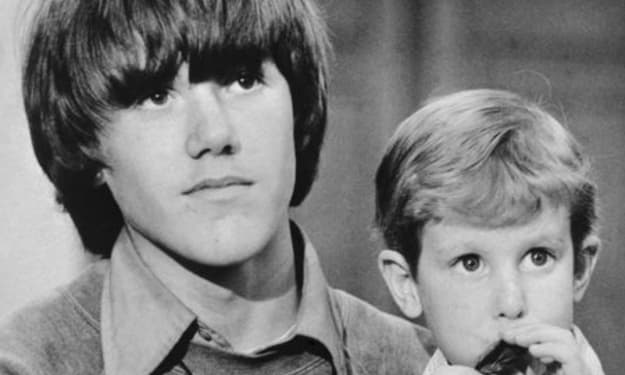Chessboard Killer - 1 of the Actual Worst: Alexander Pichushkin
The Grim Tale of Alexander Pichushkin, the Chessboard Killer

In 2007, the world was introduced to one of Russia's most notorious serial killers, Alexander Pichushkin, also known as the Chessboard Killer. His gruesome crimes and chilling methodology shocked the nation and left an indelible mark on the annals of criminal history. This article delves into the life of Pichushkin, his horrific killing spree, the meticulous investigation that led to his capture, and the impact of his crimes on society.
Background Information
Alexander Pichushkin was born on April 9, 1974, in Mytishchi, a town near Moscow. He grew up with his mother, Natasha, and his younger half-sister, Katya. His father left when he was just one year old, and the family remained in the same apartment throughout his childhood. The Pichushkin residence was a mere six-minute walk from Bitsevsky Park, a location that would later become infamous due to Alexander's actions.
As a child, Alexander was described as sweet and outgoing. However, a traumatic incident at the age of four marked a turning point in his life. While playing on a swing, he fell and was struck in the head by the swing, leading to potential damage to his frontal cortex. This injury is believed to have resulted in poor impulse control and increased aggression, which significantly altered his personality.
Details of the Crime
Pichushkin's killing spree began in 1992 when he was 18 years old. His first victim was a classmate named Michael, whom he bludgeoned to death after Michael expressed reluctance about joining him on a killing spree. This murder ignited a perverse thrill in Pichushkin, likened to the feeling of first love. He later killed his ex-girlfriend Olga's new boyfriend by pushing him out of a window. These early murders went largely unnoticed by authorities.
Pichushkin's most notorious phase of killing began in 2001, following a nine-year hiatus. He targeted homeless individuals, elderly men, and later, women and children. His modus operandi involved luring victims into Bitsevsky Park with promises of vodka or cigarettes, then attacking them from behind and disposing of their bodies in sewer wells.
By the time of his arrest, Pichushkin had killed 49 individuals, although he claimed to have murdered 63. He kept a detailed log of his victims on a chessboard, filling in 61 of the 64 squares. His killings were brutal, often involving severe head trauma, and he derived a disturbing sense of satisfaction from the act of murder.
Investigation
The investigation into Pichushkin's crimes was fraught with challenges. Initial police response to reports of missing persons was inadequate, partly due to the victims being marginalized members of society. However, as the number of disappearances grew, the authorities began to take notice.
A significant breakthrough came when Pichushkin left a victim's body out in the open, leading to increased police attention. The turning point was the murder of a retired police officer, which spurred law enforcement into more decisive action. Despite some initial missteps, including the wrongful arrest of another individual, the investigation eventually focused on Pichushkin.
The discovery of surveillance footage showing Pichushkin with his final victim, Marina, provided crucial evidence. Marina had left a note with Pichushkin's contact details, which helped the police trace him. Despite a brief delay in his arrest, Pichushkin was eventually captured at his apartment in July 2006.
Suspects and Arrest
Alexander Pichushkin was the prime suspect once police connected him to Marina's disappearance. His arrest followed an unusual procedure, with police first calling him and then waiting two days before detaining him. During interrogation, Pichushkin readily confessed to the murders and led investigators to the sites of many of his crimes.
Pichushkin's demeanor during the investigation was disturbingly nonchalant. He claimed that he had deliberately left evidence to ensure his capture, as he wanted recognition for his crimes. This assertion highlighted his narcissistic desire for notoriety and his contempt for law enforcement.
Trial and Verdict
Pichushkin's trial began on September 13, 2007, and lasted 46 days. He was kept in a glass cage for his own protection, similar to another infamous Russian serial killer, Andrei Chikatilo. During the trial, Pichushkin was unrepentant, often bragging about his crimes and expressing frustration that he was not credited with all his claimed murders.
The prosecution presented overwhelming evidence of Pichushkin's guilt, including his confessions and the physical evidence from the crime scenes. After three hours of deliberation, the jury convicted him on November 24, 2007, for 49 murders and three attempted murders. Pichushkin was sentenced to life imprisonment, with the first 15 years to be spent in solitary confinement.
Impact and Aftermath
The impact of Pichushkin's crimes on the community was profound. The revelation that a neighbor could commit such atrocities shattered the sense of security among residents. The case also highlighted significant flaws in the police response to missing persons reports, particularly involving marginalized individuals.
In response to the case, there were calls for improvements in law enforcement practices and better support for vulnerable populations. The Bitsevsky Park area, once a place of leisure, became associated with fear and tragedy, forever marked by Pichushkin's actions.
Pichushkin's trial and conviction brought some closure to the victims' families, but the emotional scars remained. The case served as a grim reminder of the potential for hidden violence within seemingly ordinary individuals.
Conclusion
The story of Alexander Pichushkin, the Chessboard Killer, is a chilling testament to the depths of human depravity. His calculated and brutal crimes, motivated by a twisted desire for recognition, left a trail of devastation in their wake. While justice was ultimately served, the lessons from this case continue to resonate, underscoring the need for vigilance and compassion in addressing the root causes of such horrific acts.
About the Creator
Sally A
Animal lover 🐾 | Health enthusiast 💪 | Self-development junkie 🌱 | Beauty explorer 💄 | True crimes & mystery enthusiast 🕵️♀️ | Let's journey together! 💫
Enjoyed the story? Support the Creator.
Subscribe for free to receive all their stories in your feed. You could also pledge your support or give them a one-off tip, letting them know you appreciate their work.






Comments
There are no comments for this story
Be the first to respond and start the conversation.